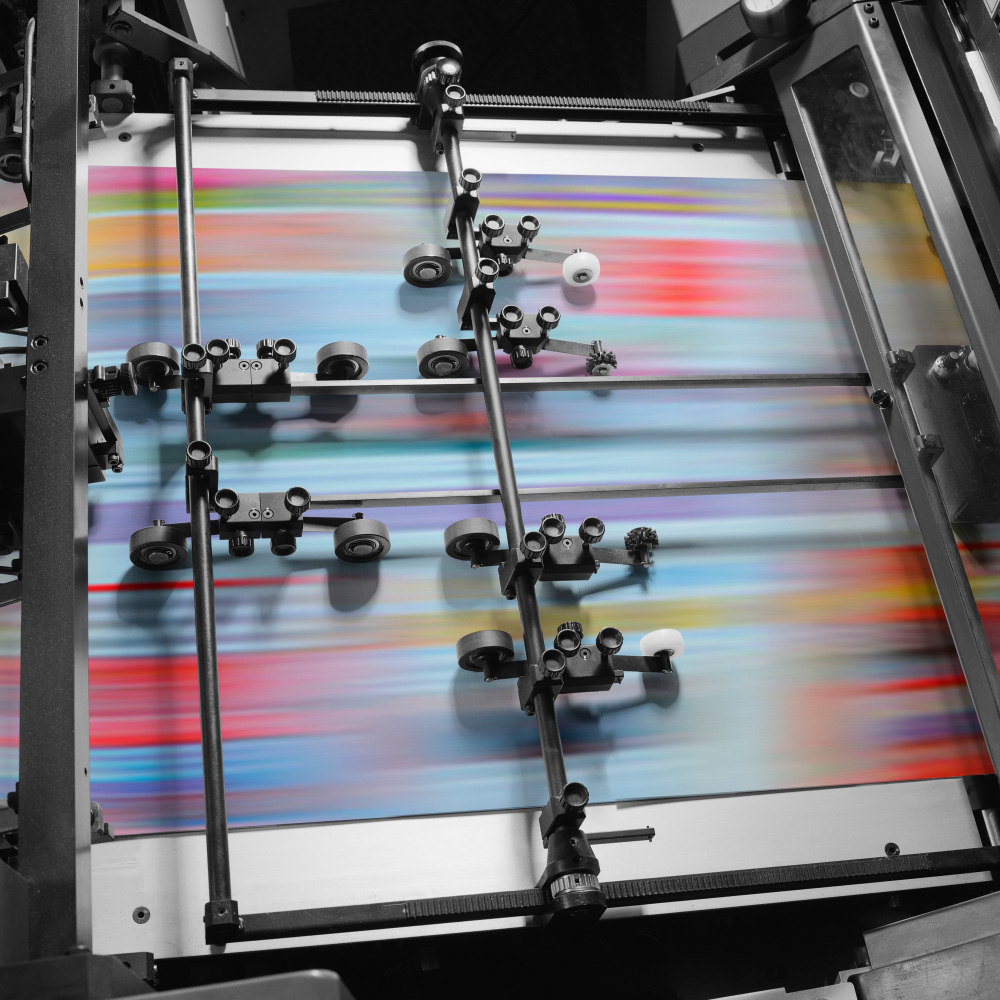
The knowledge of the press operator in flexographic printing directly affects the print quality. Having the correct knowledge is crucial for an error-free and efficient printing process. Here are the key areas of knowledge a flexographic press operator should possess:
- Machine Operating Principles
- Knowledge Requirement: The operator should have a good understanding of the operating principles of the flexo printing machine. This includes understanding how essential components like ink transfer, printing plates, and anilox rollers work.
- Importance: This knowledge is necessary to ensure the machine operates correctly and improves efficiency.
- Printing Plate Selection and Settings
- Knowledge Requirement: The operator should know which printing plates are suitable for which tasks and how to properly position the plates.
- Importance: Correct selection and adjustment of printing plates form the basis of print quality.
- Ink Types and Properties
- Knowledge Requirement: The operator should understand the different types of inks (water-based, solvent-based, UV, etc.) and their advantages, disadvantages, and drying characteristics.
- Importance: Proper ink selection directly affects print quality and speed. Additionally, ensuring the correct amount of ink is transferred is crucial.
- Knowledge of Machine Settings and Parameters
- Knowledge Requirement: The operator should be able to properly adjust parameters like print speed, ink viscosity, printing pressure, anilox roller cell structure, and color settings.
- Importance: Correct settings are necessary for the sustainability of print quality. Incorrect settings can lead to printing errors.
- Print Area and Material Types
- Knowledge Requirement: The operator should understand the materials being printed on and the printing characteristics of each (paper, plastic film, foil, etc.).
- Importance: Different materials require different printing techniques and ink types. Knowing this ensures smooth printing on the material.
- Identifying and Correcting Errors
- Knowledge Requirement: The operator should be able to identify potential errors encountered during printing and know how to fix them. For example, they should be able to resolve issues like color shifts, ink bleeding, or bubble formation.
- Importance: Quickly identifying errors helps maintain print quality and reduces labor loss during the printing process.
- Print Color Management and Mixing
- Knowledge Requirement: The operator should understand color management systems and be able to create the correct color mixes. They should also be able to apply the correct color density to the printing plate to avoid color shifts.
- Importance: Color accuracy enhances print quality and customer satisfaction.
- Machine Maintenance and Cleaning Procedures
- Knowledge Requirement: The operator should be able to perform regular machine maintenance and identify issues like ink leakage and contamination. They should also have knowledge of cleaning procedures for anilox rollers, printing plates, and other components.
- Importance: Regular maintenance and cleaning ensure the efficient operation of machines and reduce printing errors.
- Recycling and Waste Management
- Knowledge Requirement: The operator should know how to recycle and manage waste generated during the printing process.
- Importance: Proper waste management is essential for environmental sustainability.
- Safety Protocols and Occupational Health
- Knowledge Requirement: The operator should be familiar with safety measures and emergency procedures during machine operation.
- Importance: Safety measures protect the health of the operator and other workers, preventing workplace accidents.
- Data Tracking and Performance Monitoring
- Knowledge Requirement: The operator should be able to track production processes and machine performance, as well as monitor necessary data to ensure the continuity of print quality.
- Importance: Correct data tracking is essential for efficient production processes and continuous improvement.
A flexographic press operator must possess comprehensive knowledge of machine specifications, material knowledge, ink and color management, as well as maintenance and cleaning procedures. This knowledge is crucial for achieving high-quality printing results and improving efficiency in the production process.








































